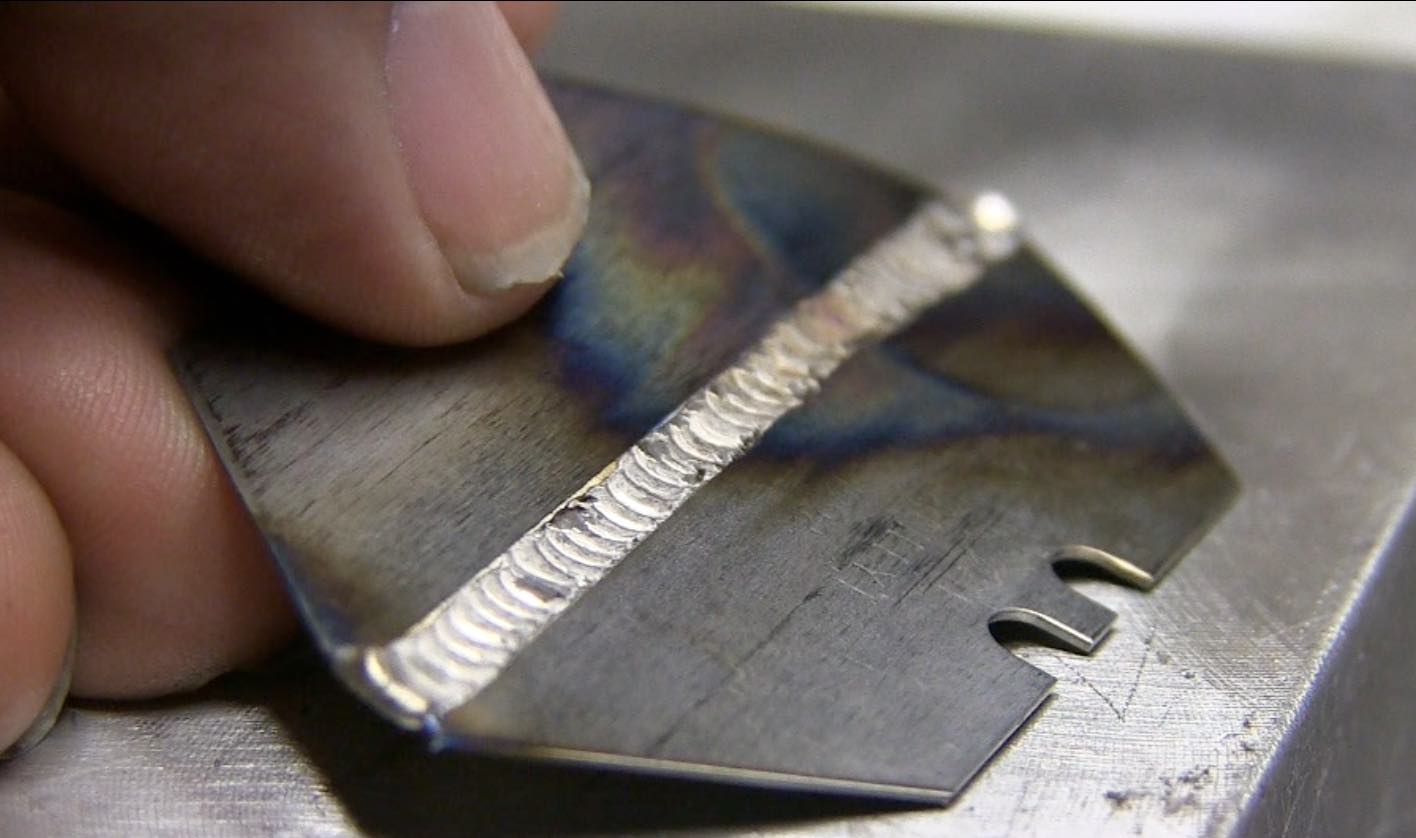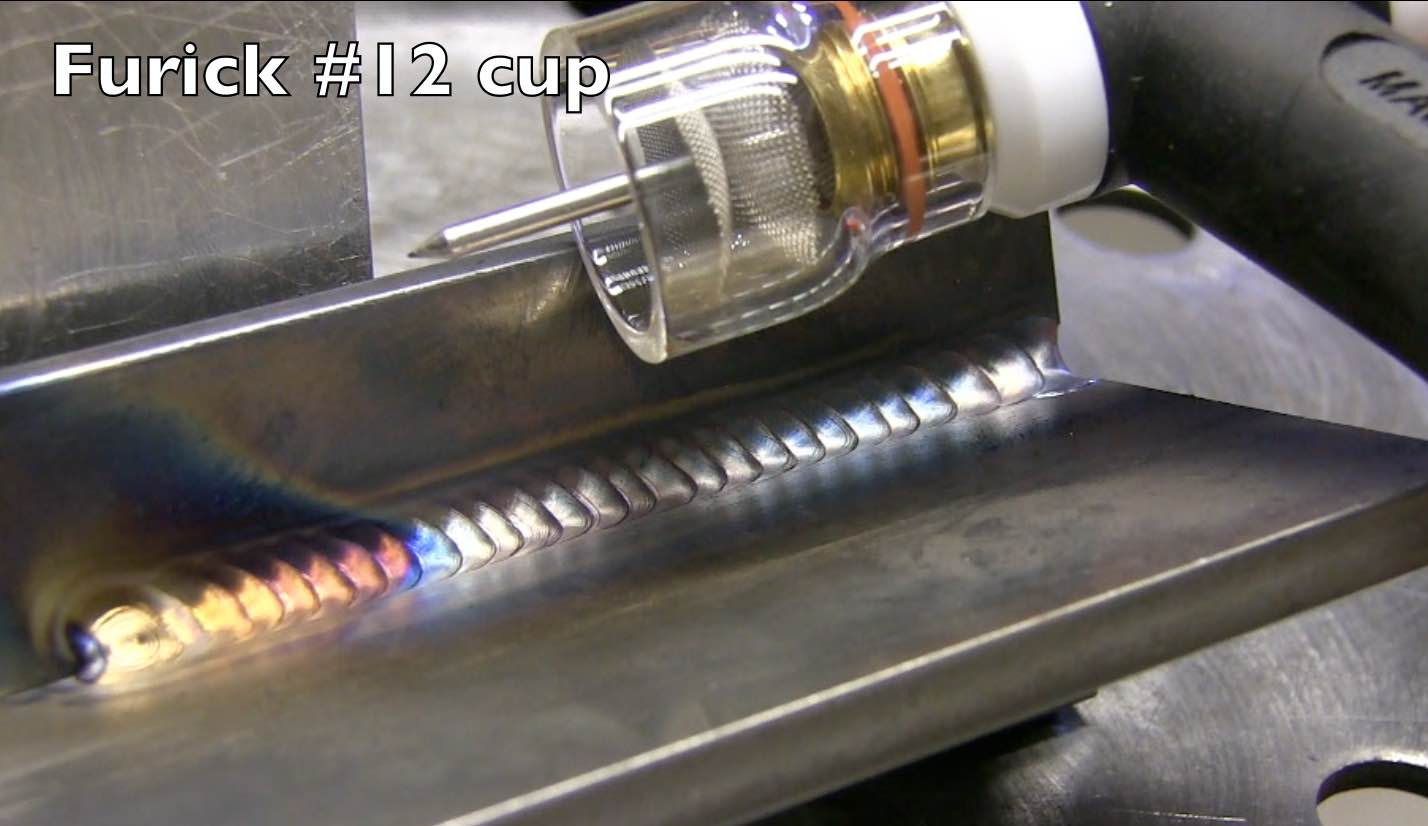Lincoln Square Wave Tig 200
This is the first Video of several on the Lincoln Square Wave Tig 200 amp tig inverter.
I never really cared for unboxing type videos but I did want to take a minute to show what comes with this TIG welder because some tig welders dont come with anything at all.
The SquareWave TIG 200 came with everything needed except for a cylinder of argon.
Tig Welding .030" (.8mm) 6061 aluminum using the Lincoln Square Wave 200
I set up some sample test pieces of .030" 6061 aluminum to test the low amp arc start capability.
Every now and then you get hold of some thin aluminum...or aluminum that has been worn down to a very thin area.
Being able to start the arc without blowing a hole is important.
I went down as low as .025" (.6mm) thick without melting the corners.
The specifications on the Lincoln squarewave 200 say arc starts are fixed a 25 amps...and that makes for a pretty harsh start compared to other welders with adjustable start parameters.
But what actually happens is that the 25 amp start is only for a few milliseconds before it drops off to 10 amps or less.
So here is a shot of a weld on .030" (.8mm) aluminum at 40-45 amps
3/32" 2% lanth electrode, AC balance set to 67, AC frequency 150, #6 cup with 13 cfh argon, 1/16" (1.6mm) 4043 filler

one amp per one thousandths?
not always
there is a rule of thumb that for sheet metal tig welding, one amp per one thousandths of thickness is pretty close.
But for aluminum, you can usually count on more like 1.5 amp per one thou.
lots of things come into play like chill blocks, AC frequency and AC balance.
I used a fixture for these test welds because small aluminum parts will saturate with heat so quickly that you dont get a true picture of how the welder performs.
Since this fixture is made from steel and not a more conductive metal like aluminum or copper, it provides just about the right amount of heat sink.
Using a .045" thick piece, I set the amperage to 45 amps and welded about one inch . then I increased the amperage to 65 amps...slightly above what I thought I needed for the rest of the weld.
I had my phone recording the amperage readout and it peaked out at 63 amps.
All things being equal, Aluminum takes more amperage to weld than steel.
Welding Box Cutter blades with the Lincoln Square wave TIG 200

Box cutter blades are usually around .024" (.6mm) thick.
these measured .023"
So I set amperage to 23.
The arc start was a bit too much for the corner of the thinnest part of the blade.
As previously mentioned, The Arc Start is preset to 25 so in order to weld something this thin, you need some workarounds.
That where a block of aluminum or copper comes in handy.
I laid the box cutter blades on a thick piece of aluminum and started the arc on the aluminum.
then after the peak of the start, I could walk the arc over to the blade and weld with no really issues.
Remember, I am using 3/32" tungsten on these box cutter blades.
200 amps on cold rolled
I didnt get around to welding any thick aluminum today but I did test out the max amperage on some cold rolled at 200 amps.
then I lowered amperage and welded a bit using a Furick 12 cup.
This cup is the jam for when you need a long stickout and still want great argon coverage...
You can learn more about the Furick 12 and other products at weldmonger.com














